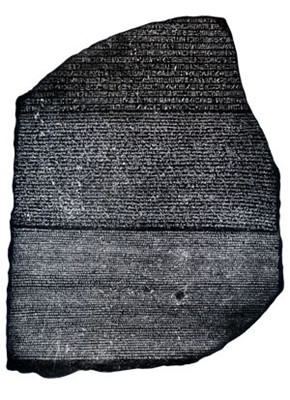By 1822, Champollion had finally worked the whole thing out. From now on the world could put words to the great objects-the statues and the monuments, the mummies and the papyri-of Ancient Egyptian civilisation.
1822年,商博良完成了全部的破譯工作。自此,人們便能閱讀一切古埃及文物上的文字,包括雕像、紀念碑、木乃伊和莎草紙文獻。
By the time of the Rosetta Stone, Egypt had already been under Greek rule for over a hundred years, and the Ptolemies' dynasty would last for another 150. The dynasty ended infamously with the reign of Cleopatra VII-'the' Cleopatra who beguiled and seduced both Julius Caesar and Mark Anthony. But with the death of Anthony and Cleopatra, Egypt was conquered by Augustus, whose image I'll be talking about later this week, and the Egypt of the Ptolemies became part of the Roman Empire.
羅塞塔石碑制作之時,埃及已被希臘統治了一百余年,之后,托勒密王朝的統治又延續了一百五十年,最終在艷后克里奧佩特拉七世手中聲名狼藉地結束。她先后色誘了愷撒大帝與馬克安東尼。在安東尼與克里奧佩特拉死后,埃及被奧古斯都占領。托勒密埃及成了羅馬帝國的一部分。












